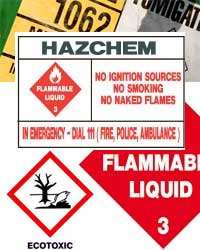Hazardous Substances and New Organisms Act 1996 (HSNO)

The purpose of this Act is ‘to protect the environment, health and safety of people and communities by
preventing or managing the adverse effects of hazardous substances and new organisms’.
Its two guiding principles are:
- safeguarding life supporting capacity of air, water, soil, and ecosystems
- maintaining and enhancing the capacity of people and communities to provide for their future economic,
social, and cultural wellbeing.
Under the Act, hazardous substances such as agrichemicals need to be approved before they can be used
in New Zealand. Approvals may also be needed for the people who will use them, and where and under what
conditions they are stored.
If an agrichemical is approved, it is given:
- one or more hazard classifications which, in turn,
- trigger
one or more controls (or rules) regarding its handling, storage and use.
The EPA no longer is responsible for the safe use of substances hazardous to human health in the workplace but they remain responsible for:
- importation and manufacture of agrichemicals
- disposal of hazardous substances, including waste
- use of ecotoxic substances in all locations
- use of substances hazardous to human health outside the workplace.
The EPA uses Notices as tool to implement controls (similar in effect to regulations). There are several notices relevant to agrichemicals:
Hazardous Property Controls Notice 2017
This sets out the rules for use of hazardous substances outside the workplace but also the rules for use of ecotoxic agrichemicals in the workplace. These rules include:
- the requirement to
- restrictions on which classes may be sold outside the workplace
- requirement to avoid spraying pollinators such as bees.
 |
The full version of the Act is available online . |